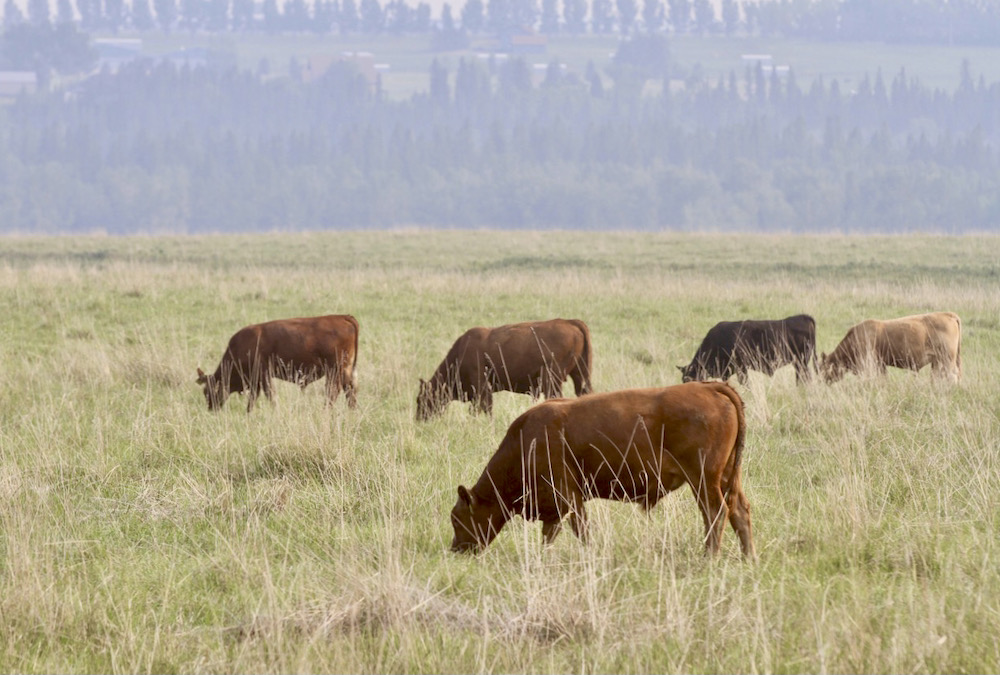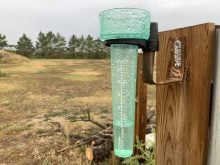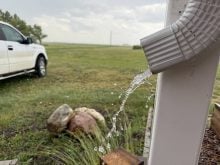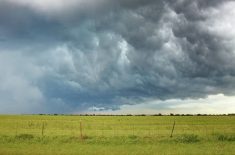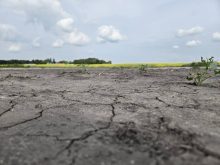The Canadian Cattlemen’s Association and provincial cattle organizations have a plan to help drought-stricken beef producers.
But quick action is needed, they say.
The groups outlined a four-part strategy for immediate relief measures requested from federal and provincial governments during a CCA virtual Town Hall on July 19. All provincial cattle organizations, including Alberta Beef Producers, are backing this strategy.
“The first step is to enact immediate but temporary measures on crop insurance programs to support the timely designation of crops into livestock feed,” said Brady Stadnicki, the CCA’s manager of policy and programs.
Read Also

VIDEO: Claas Axion 9 tractors showcase comfort features
German equipment manufacturer Claas showcased its new Axion 9 tractor series, including farmer-focused cab features, at the Agritechnica 2025 machinery show in November.
“We’ve requested that crop insurance programs really expedite approvals for crops to be designated for livestock feed or grazing purposes. It’s critical that crop insurance staff or adjusters can assist with producer requests and questions in a timely manner.”
Flexibility is critical because of the urgency of the situation, he added.
There should also be an incentive so crops can be grazed or converted into feed without penalty.
One option suggested was to increase low yield appraisal thresholds for farmers who salvage crops into livestock feed without impacting future individual coverage. This program has been implemented in Saskatchewan and the CCA would like to see it across the provinces.
The organization also suggested that a rebate or incentive on next year’s crop insurance premiums be given to a producer who turned decimated crops into livestock feed.
“This request is very urgent, giving the closing window for turning crops into feed,” said Stadnicki. “It is a top priority for the beef industry to maintain the cattle herd by working with grain farmers to convert these failed or poor crops into feed while this opportunity still exists.”
The next part of the strategy is to urge government to support quality water access and infrastructure.
“The lack of access to quality water is becoming an animal health and welfare concern for beef producers,” he said.
In a statement on July 15, Alberta Agriculture and Forestry Minister Devin Dreeshen said that Alberta has a water pumping program that provides assistance to producers for the emergency filling of dugouts for livestock. Producers can rent pipe and pumping equipment from the province to fill dugouts for their animals.
“Giving the severity of the situation around water, we are recommending that federal/provincial governments dedicate additional resources around water to support beef producers upgrading or building water infrastructure in a timely manner, where needed,” said Stadnicki.
The third ask is for federal and provincial governments to immediately initiate drought-relief programming under AgriRecovery to assist with extra costs related to feed and water for cattle, and to support the national cattle herd.
Programs in the past have focused on a “feed need” design, which provides some money to feed animals on an animal-per-day basis.
“In our view, this is a preferable program design,” said Stadnicki, adding this option provides flexibility as producers seek to source alternative feed.
On July 15, the CCA and the provincial organizations received a verbal commitment from Ottawa that a joint AgriRecovery program will be implemented to support Prairie producers affected by drought conditions.
With a federal election call expected fairly soon, it was a relief that the government agreed right away to this request, said Melanie Wowk, chair of Alberta Beef Producers.
“This was something that we were really pushing for because of the possibility of a federal election being called,” she said. “And if that happens, everything goes into limbo. We really wanted a solid answer from them.”
The fourth part of the strategy is the livestock tax deferral program.
“We’ve requested that the federal government immediately request a tax deferral for the entire Prairie provinces and parts of Ontario and B.C. that have been impacted by drought conditions,” said Stadnicki. “We do know that Agriculture Canada and the Department of Finance are getting this rolled out quickly as we speak here today.”
Due to the current limitations of the program and the severity of the situation, the CCA and the other cattle organizations are also asking that eligibility be expanded to include all classes of cattle, and last for more than one year, to help producers’ restocking decisions.
The disaster situation varies widely based on a producer’s location and situation, said Stadnicki, so the implementation of the strategies should be flexible enough to address individual problems quickly.
In meeting with officials from both levels of government as well as the Agricultural Financial Services Corporation, the goal of her organization has been to drive home the dire nature of the drought in Alberta, said Wowk.


